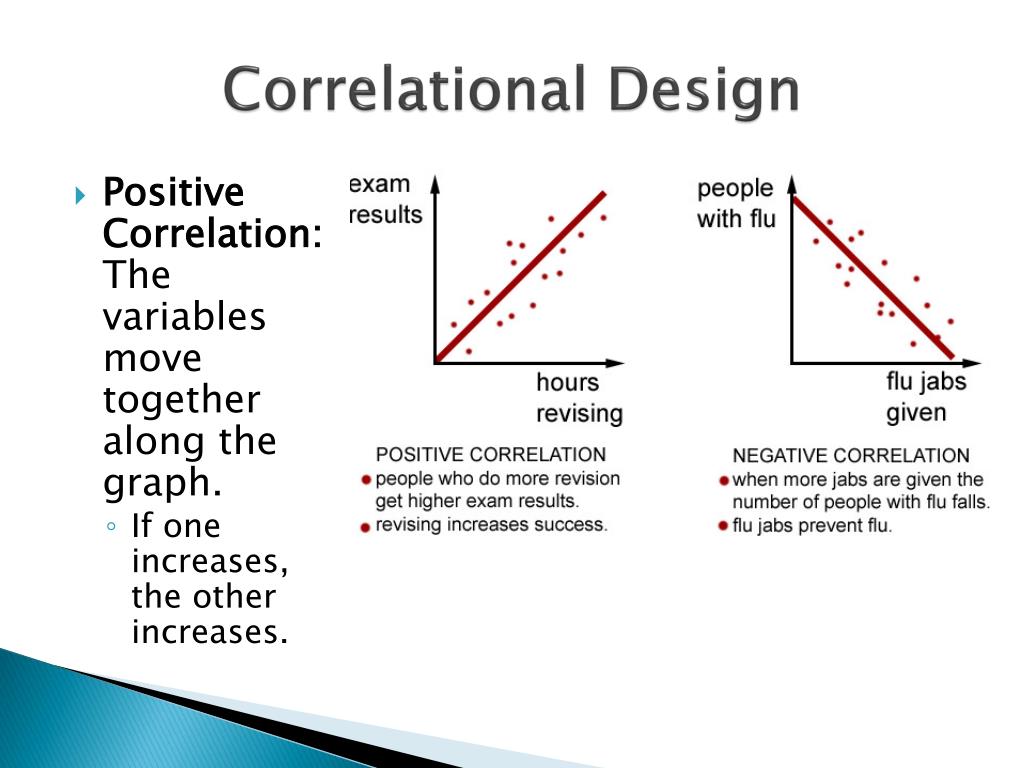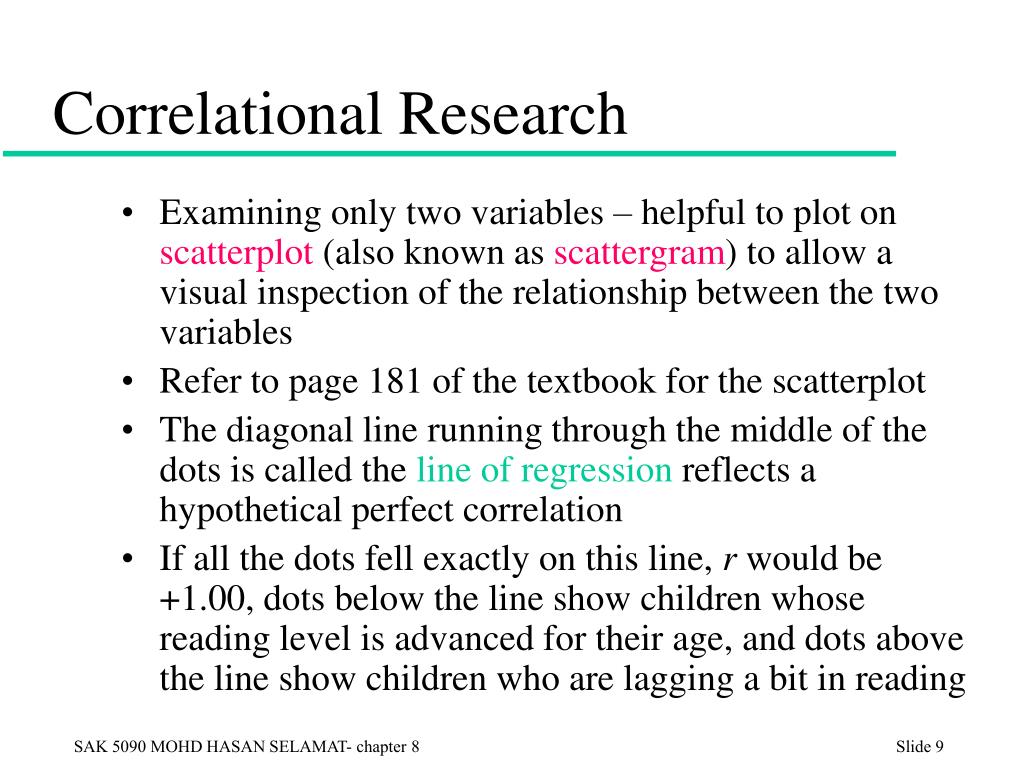Table Of Content

Zero correlational research is a type of correlational research that involves 2 variables that are not necessarily statistically connected. In this case, a change in one of the variables may not trigger a corresponding or alternate change in the other variable. This type of research is descriptive, unlike experimental research that relies entirely on scientific methodology and hypothesis. For example, correlational research may reveal the statistical relationship between high-income earners and relocation; that is, the more people earn, the more likely they are to relocate or not. Researchers Robert Levine and Ara Norenzayan used naturalistic observation to study differences in the “pace of life” across countries (Levine & Norenzayan, 1999). One of their measures involved observing pedestrians in a large city to see how long it took them to walk 60 feet.
VII. Chapter 7: Survey Research
In correlational research, there’s limited or no researcher control over extraneous variables. Even if you statistically control for some potential confounders, there may still be other hidden variables that disguise the relationship between your study variables. After collecting data, you can statistically analyse the relationship between variables using correlation or regression analyses, or both. You can also visualise the relationships between variables with a scatterplot.
What are the Data Collection Methods in Correlational research?
The chapter next briefly outlines the use of partial correlation analysis. The following section on multiple regression analysis (MRA) describes simultaneous and sequential MRA, the types of information provided by MRA, the problem of multicollinearity, and MRA as an alternative to analysis of variance (ANOVA). The chapter concludes with brief discussions of two other forms of correlational analysis, logistic regression analysis and multiway frequency analysis. The correlation coefficient shows the correlation between two variables (A correlation coefficient is a statistical measure that calculates the strength of the relationship between two variables), a value measured between -1 and +1.

XIII. Chapter 13: Inferential Statistics
Similarly, there is a positive correlation between a person’s age and their income level. Correlational Research is a type of research that examines the statistical relationship between two or more variables without manipulating them. It is a non-experimental research design that seeks to establish the degree of association or correlation between two or more variables. Correlational research is a type of research design commonly used in the social and behavioral sciences. It helps find the association between variables based on the participants’ responses selected for the study.
Data Collection in Correlational Research
If the researcher randomly assigned some participants to make daily to-do lists and others not to, then it is an experiment. If the researcher simply asked participants whether they made daily to-do lists, then it is a correlational study. The distinction is important because if the study was an experiment, then it could be concluded that making the daily to-do lists reduced participants’ stress.
Chapter 12 Methods for Correlational Studies
A correlation coefficient is a single number that describes the strength and direction of the relationship between your variables. There are many other variables that may influence both variables, such as average income, working conditions, and job insecurity. You might statistically control for these variables, but you can’t say for certain that lower working hours reduce stress because other variables may complicate the relationship. This method often involves recording, counting, describing, and categorising actions and events. Naturalistic observation can include both qualitative and quantitative elements, but to assess correlation, you collect data that can be analysed quantitatively (e.g., frequencies, durations, scales, and amounts).
You are unable to access statisticsbyjim.com

This is what correlational research precisely is, establishing a relationship between two variables, “jingle” and “distance of the truck” in this particular example. The correlational study looks for variables that seem to interact with each other. When you see one variable changing, you have a fair idea of how the other variable will change. There are two common situations in which the value of Pearson’s r can be misleading. Pearson’s r is a good measure only for linear relationships, in which the points are best approximated by a straight line.
If researchers need to gather a large amount of data in a short period of time, a survey is likely to be the fastest, easiest, and cheapest option. However, this does not mean that researchers will get reliable data from watching the variables, or that the information they gather will be free from bias. For one, it does not allow them to control or influence the variables in any way nor can they change any possible external variables. In some cases, it might be the only method available to researchers; for example, if lab experimentation would be precluded by access, resources, or ethics. It might be preferable to not being able to conduct research at all, but the method can be costly and usually takes a lot of time.
Formplus - For Seamless Data Collection
An approach to data collection that involves observing people’s behaviour in the environment in which it typically occurs. When the observations require a judgment on the part of the observers—as in Kraut and Johnston’s study—this process is often described as coding. The observers then categorize participants individually in terms of which behaviour they have engaged in and the number of times they engaged in each behaviour. The target behaviours must be defined in such a way that different observers code them in the same way.
The first is that they do not believe that the statistical relationship is a causal one or are not interested in causal relationships. Recall two goals of science are to describe and to predict and the correlational research strategy allows researchers to achieve both of these goals. But consider a study by Christopher Peterson and his colleagues on the relationship between optimism and health using data that had been collected many years before for a study on adult development (Peterson, Seligman, & Vaillant, 1988). In the 1940s, healthy male college students had completed an open-ended questionnaire about difficult wartime experiences. The researchers then assessed the statistical relationship between the men’s explanatory style as college students and archival measures of their health at approximately 60 years of age. The primary result was that the more optimistic the men were as college students, the healthier they were as older men.
(PDF) Rorschach inkblot test and psychopathology among patients suffering from schizophrenia: A correlational study - ResearchGate
(PDF) Rorschach inkblot test and psychopathology among patients suffering from schizophrenia: A correlational study.
Posted: Tue, 03 Oct 2023 23:28:52 GMT [source]
You've probably heard the phrase, "correlation does not equal causation." This means that while correlational research can suggest that there is a relationship between two variables, it cannot prove that one variable will change another. It's also a flexible method because it lets researchers create data-gathering tools that will help ensure they get the information they need (survey responses) from all the sources they want to use (a random sample of participants taking the survey). For example, study subjects might act differently if they know that they are being watched. The researchers might not be aware that the behavior that they are observing is not necessarily the subject's natural state (i.e., how they would act if they did not know they were being watched). Correlational studies are often used in psychology, as well as other fields like medicine.
These ratings were then averaged to produce an explanatory style score for each participant. The researchers then assessed the statistical relationship between the men’s explanatory style as undergraduate students and archival measures of their health at approximately 60 years of age. The primary result was that the more optimistic the men were as undergraduate students, the healthier they were as older men. Figure 7.2 shows data from a hypothetical study on the relationship between whether people make a daily list of things to do (a “to-do list”) and stress. Notice that it is unclear whether this design is an experiment or a correlational study because it is unclear whether the independent variable was manipulated.
The outcome is known as the dependent variable and the variables being tested for association are the independent variables. Correlational studies are similar to comparative studies in that they take on an objectivist view where the variables can be defined, measured and analyzed for the presence of hypothesized relations. As such, correlational studies face the same challenges as comparative studies in terms of their internal and external validity. Of particular importance are the issues of design choices, selection bias, confounders, and reporting consistency. Interests in how variables may relate to each other and how systems of relationships among variables may be at play often underlie the questions music education researchers pose. This chapter describes basic design and analysis considerations in research that involves the systematic investigation of whether and how variables are related; in other words, correlational research.

No comments:
Post a Comment